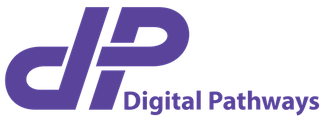The Increased Risk of Hacking Apple Macs
It is estimated that Microsoft have around 90% of the market share when it comes to operating systems. This statistic may be slightly misleading though, as it appears to be based on purchases. It doesn’t necessarily take into account the usage levels. Although most new PC’s have Microsoft windows already installed for example, it doesn’t mean that the user doesn’t install something else. Apple, the main rival to Windows, can also argue that their devices have a longer lifespan, and therefore aren’t accurately represented. Whatever the true reflection, what is clear is that having a far inferior market share isn’t protecting Apple users from hackers any more.
Initially, it seemed the obvious choice for cybercriminals to target the operating system that hosted the most users. But, as Macs have grown in popularity and numbers begin to show that there is potentially less of a gap than originally thought, hackers are beginning to transfer their gaze to a new challenge.
At Digital Pathways, we have made it our aim to highlight incidents where a lack of security has led to harm. A good example was a little over two years ago when a young girl had her webcam hacked. The camera was being turned on remotely and she was being recorded when she least expected it. Although she knew this was happening, when she returned to the Apple store there was no evidence of a hack.
This was a case that should have started to ring the alarm bells among Apple users, who may have felt invulnerable at the time. It didn’t, and the general Apple user still continues to believe that there are somehow already protected. They refuse to think about security and updating their systems for safety. It is rare to find a Mac with anti-virus, malware or Trojan detection software.
In the past, Apple themselves haven’t exactly been vocal on the subject either. Whereas Microsoft are keen to stress the importance of the regular patches that are released for their systems, Apple are less active when it comes to promoting their updates. Users are left in the dark and therefore do little, if anything, to mitigate the potential risks.
Things are now beginning to change though. In the last 12 months, Apple have stepped up and began employing industry recognised security names. For Microsoft users, there is a constant stream of third party adverts pushed their way for companies such as Sophos and Symantec, encouraging them to buy security software. Until recently, there wasn’t many anti-virus packages available for Apple, whereas now they are starting to immerge.
Here are a couple of things you can do to help protect yourself:
- Download an anti-virus package from a recognised vendor. Do not just download free, anonymous packages, it must be from a recognised vendor.
- Ensure that any updates/security patches are installed when available. If unsure, you can check this by visiting your settings tab.
- Be careful when you are online. Think before you click!
- Be aware of ‘man in the middle’ attacks.If using a WiFi connection in a coffee shop, for example, the hacker may be too. You think you are interacting with your bank but in reality you are talking to the hacker. The latter can then pretend to be you and access those accounts. To avoid this, you must be sure a padlock icon is shown in the system tray. This confirms you are using a secure system. Do not use any connection where the padlock emblem is not shown or use a free Wifi spot that you do not trust.
- Use software that checks whether websites are secure. A popular one is called Packeteer. It is owned by IBM and free for HSBC clients.
If you have any questions or are concerned about your cybersecurity get in touch: call 0844 586 0040, or fill out our contact form & we will contact you or email us direct: [email protected]

